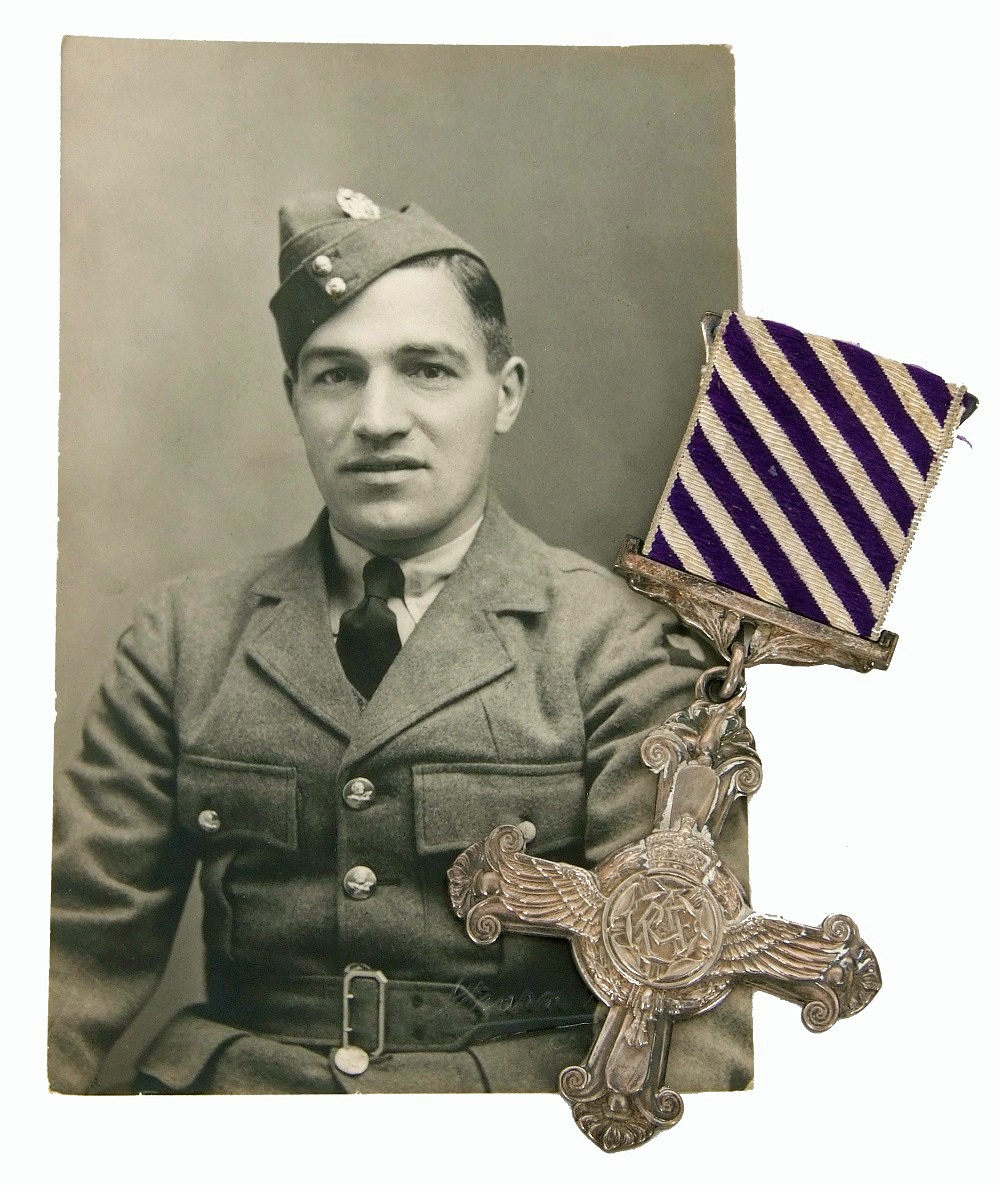

30/09/2023 General News
The Distinguished Flying Cross is the highest award for valour in the RAF, writes Oscar Crocker. It was established in 1918 shortly after the formation of the RAF. Of the 22,322 DFCs which have been awarded since then, 20,354 were won during World War Two. The medal was last awarded in 2017.
DFCs are always in demand in the saleroom, especially if they are accompanied by background and evidential material such as photographs, letters, documents and other materials.
Coming up for auction next week is a DFC with one of the most comprehensive accompanying portfolios that I have ever seen. William Walter Cave was awarded his medal in 1941 for a daring raid over the Atlantic which saw him and his crew fatally damage a German U-boat.
Born in Leicester in 1918 – in a neat symmetry, the year the RAF was founded – Cave left school at the age of 14. A talented footballer, he was signed by Doncaster Rovers in 1935, although there is no record of him making any big impact in the first team.
On the outbreak of war in 1939 he joined the RAF, still just 21 years old. He quickly showed an aptitude for flying, and graduated as a pilot after a surprisingly short training, as many did at the time. He found himself attached to 59 Squadron, which flew Halifax bombers taking part in anti-submarine patrols over the Atlantic.
Cave was awarded his DFC for a daring raid on a U-boat while on one such anti-submarine patrol over the eastern Atlantic in a Halifax bomber. Having spotted the vessel three miles off his starboard bow, Cave manoeuvred his plane to attack, releasing a stick of explosives in front and alongside the U-boat, with both front and rear gunners releasing salvoes at the conning tower.
The U-boat finally submerged, but immediately afterwards a huge gush of oil rose to the surface, indicating that the submarine had been fatally damaged.
In the citation for his medal, it was stated that ‘Flying Officer Cave had drilled his crew to such perfection that he was able to inflict the most effective damage on the enemy. The attack was carried out with great skill by this officer, whose leadership and devotion to duty were of the highest order.’
Bill Cave’s luck ran out over the Bay of Biscay in May 1943. By now a Squadron Leader, and flying a Liberator bomber over the Bay of Biscay, he simply vanished in bad weather. It is assumed that the plane crashed into the sea, with the loss of Cave and all of his six man crew. They are commemorated at the Runneymede Memorial for Unaccounted Airmen and Airwomen.
As well as his medal, which is in excellent condition and still in its original case, included in the lot going under the hammer next week is a whole box of supporting material telling Cave’s story, from childhood photos to a postcard showing the 1935 Doncaster Rovers team.
There are many letters both to and from him, and perhaps most interestingly, many photographs taken from the exterior cameras of his Halifax airplane showing U-boats in the Atlantic, including during attacks. Also included is the gimble compass from his plane, and the original clock from the aircraft, mounted to create a mantel clock.
The lot has a pre-sale estimate of £2,200-£2,600.
This is an important historical lot, but also a human one as well. Cave was one of many young men who signed up at the start of the war, who demonstrated considerable bravery, and who paid the ultimate sacrifice.